By: Evah Tolikaka
Edited by: Ruth Jordan-Som, Elizabeth Muruna, Richard Dikrey and Steven Nake
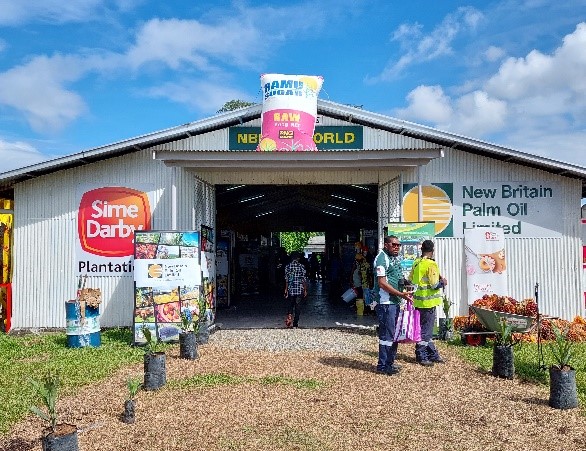
A team of five representatives from Dami Oil Palm Research Station travelled to Lae, Morobe Province, to participate in the 2022 two-days Morobe Agriculture Show. The five representatives consisted of their team leader Steven Nake (Head of Smallholders/Socioeconomic Research (SSR)), Richard Dikrey (Entomology Research Officer – OIC), Evah Tokilala (Plant Pathology OIC) from PNG Oil Palm Research Association (OPRA), and Ruth Jordan-Som (Plant Breeder/Head of Plant Breeding) and Elizabeth Muruna (Biotech Laboratory Manager) from NBPOL Oil Palm Research Station (OPRS).
The preparations began two months in advance with frequent meetings ensuring all display posters, brochures, specimens, samples, itineraries, accommodation, etc., were arranged beforehand. Moreover, communication was effective between Steven Nake and the Research and Development (R&D) show team leader Leka Tom (Plant Pathologist) from Ramu Agriculture Industries Limited (RAIL) to ensure all requirements were met and biosecurity measures adhered to.
The Dami team left for Lae on Thursday, 6th October 2022, by 2.30 pm arriving at Nadzab Airport by 3.30 pm. All boxes of show materials were transported by a hired car (OPRA hire) with Richard Dickey. In contrast, the rest of the team was fascinated by the Guard Dog fleet in Lae city, arriving around 5 pm at their respective accommodations in Lae International Hotel for the OPRS reps and Huon Gulf Hotel for the OPRA reps as Morobe Hotel was fully booked on Thursday.
The next day Friday, 7th October 2022, was preparation day. The OPRA reps checked out from Huon Gulf Hotel and into Morobe Hotel while waiting for the RAIL R&D team to arrive. The RAIL R&D team arrived by lunchtime at the showground. The R&D team was allocated two booths out of the nine booths. Booth 5 was occupied by RAIL R&D (sugar cane research), while Booth 6 was occupied by Dami R&D (oil palm research). The R&D team from RAIL and Dami got acquainted and began booth setup immediately. At the same time, John Palolen (RAIL Agronomist) and Richard Dikrey left for the Markham farms to collect female and male inflorescences, commercial fruit bunch and pollinating weevils for display. The RAIL construction team assembled the tables within 1 to 2 hours after lunch before setting up began.
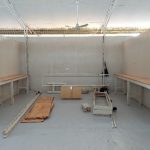
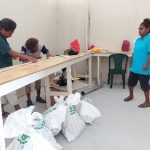
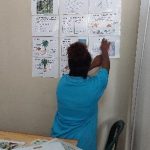
Plate 1: Setting up of the Oil palm R&D booth.
By 3 pm, the team started setting up the booth by arranging the tables according to the flow of Plant Breeding and Biotech on the left, Agronomy on the right, whilst Crop protection (Entomology, Plant Pathology) and SSR in the middle. A “U” shape formation was specifically for the showgoers to walk around to look at the specimens/samples on the table and read the posters pinned above on the wall. By 5 pm, John and Richard returned from Markham Farms, and displaying specimens, samples and pinning of posters continued until 8 pm. Even though there was a power outage, the team managed to use their phone torches to complete pinning up the posters and picture guides.
The two days of the Morobe show were no different, with a high number of showgoers passing through the booths. On the first day of the show (Saturday, 8th of October), the team arrived by 8 am at the showground. There were massive crowds of excited showgoers with traffic jams at all corners however the team still managed to arrive there before 9 am. Upon arrival, some finishing touches were done while receiving showgoers into the booth.
Men, women, teenagers, and children flocked into the NBPOL pavilion and into the oil palm R&D booth. Students from the University, Secondary and Primary schools asked very good questions, people from other works of life were interested to know about oil palm, local villagers were amazed by new information, colleagues from other agriculture sectors visited and children came in or either dragged their parents into the stall just to get a glimpse of the oil palm bunches and the pests and beneficial insect on display.
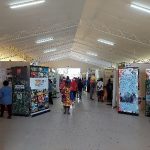
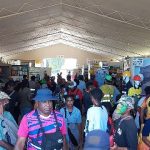
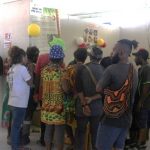
The outline of the flow of presentations within the oil palm R&D booth ensured the importance of oil palm research was highlighted. Plant Breeding exhibited the breeding materials of various populations, male and female inflorescence, breeding bunches of the dura, pisifera and tenera oil palms which had some of their fruitlets cut open to visualize the differences between the kernel size, shell size and mesocarp size essential for high oil extraction. Other breeding materials that address easy harvesting and safety in long stalk bunch and minimization of loose fruit seen through the distinct virescence colours of the fruitlets were also displayed. Most people were curious about the male and female flowers, which drew their attention to the booth.
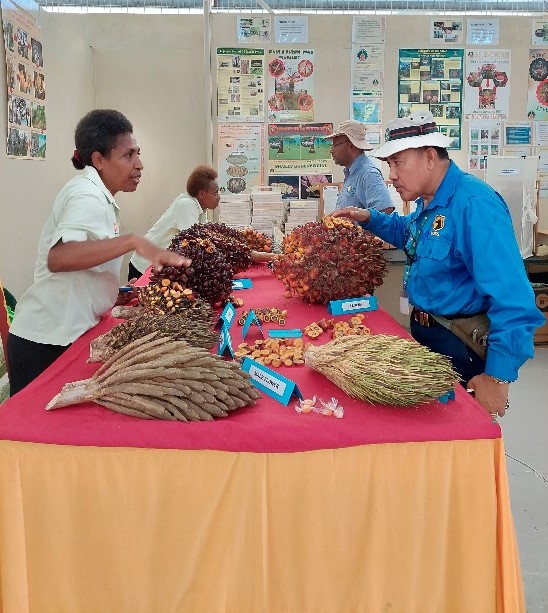
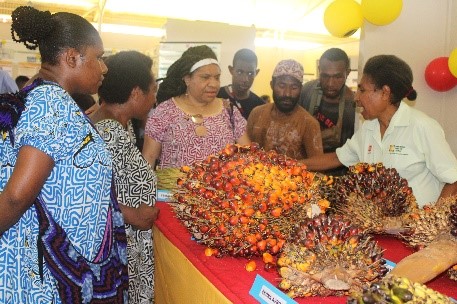
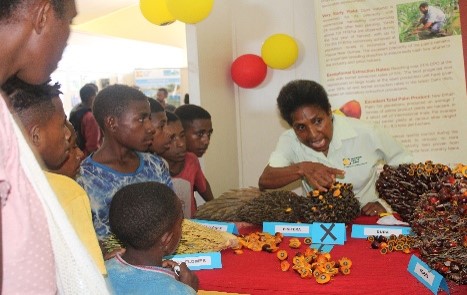
Biotech had test tube displays containing stages of oil palm cloning from embryo to ramets indicating the future of large-scale production of oil planting material. Clear explanations were given on how the clones are derived from plant tissue which most people found amazing. Reading materials of brochures and booklets were also given out to showgoers.
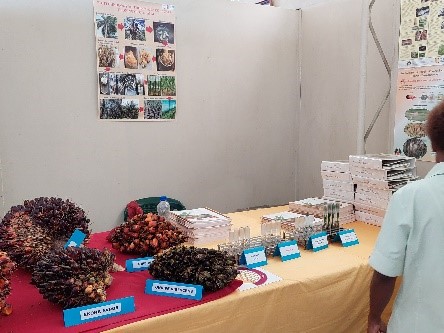
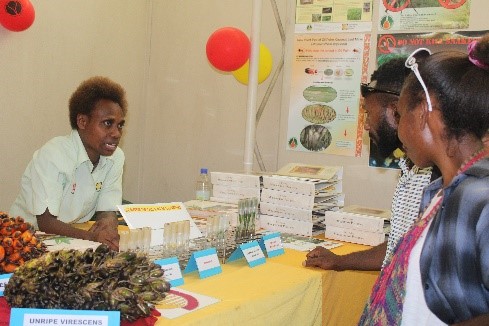
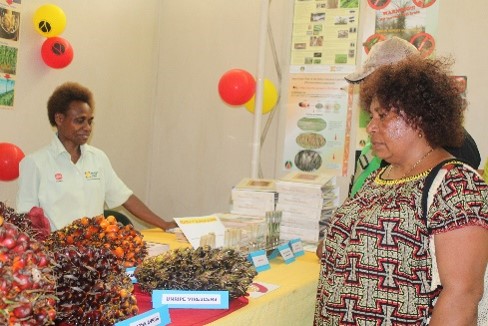
Plate 4: Elizabeth Muruna showcasing the clonal breeding materials to the show attendees
The crop Protection section highlights common pests and diseases in oil palm and nature and the intensity of damage caused. Insect cases were displayed, showing the common oil palm insect pests on the mainland and in the New Britain islands with posters and pamphlets of major pests and major oil palm diseases in PNG. In addition, live beneficial insects of pollinating weevils were exhibited in a cage with a male inflorescence highlighting how the weevils play an important role in oil palm production. While the major oil palm disease stressed more was basal and upper stem rot caused by Ganoderma boninense. Most people were stunned and appreciated the pollinating weevils, and some found it interesting that mushroom-like fungi can cause major rot in living oil palm
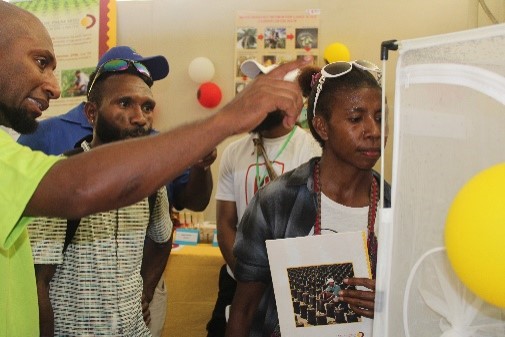
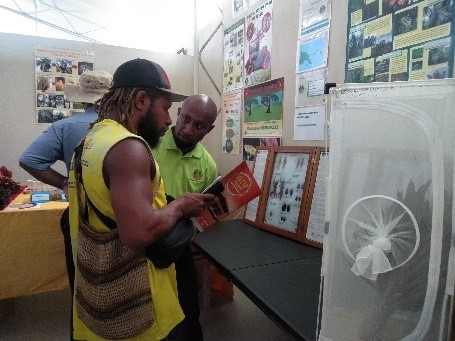
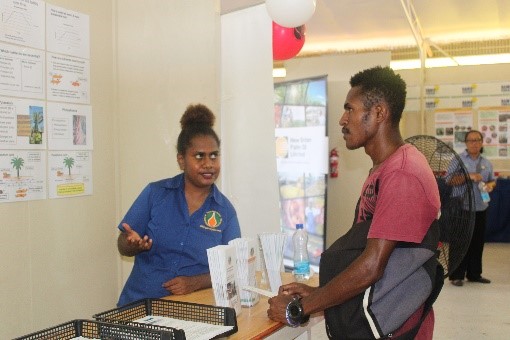
Plate 5: Richard Dikrey showcases the beneficial insect of pollinating weevils and common oil palm pests (left and middle), and Evah Tokilala showcases the major diseases in oil palm (right)
Agronomy had visual guides of different oil palm nutrient deficiencies in leaves and palms. The importance of fertilizer application was greatly emphasized to avoid nutrient disorders and to achieve a high yield. Other technical information displayed includes the method of planting oil palm and weed management. While SSR had displays of posters and pamphlets stressing more on oil palm best management practices in smallholders to produce high yield and high income. And presented how SSR conducts research on identified challenges/problems faced by smallholder oil palm growers in order to strategize applicable solutions to help sustain their livelihoods so that they can actively farm and sell their oil palm crops to the milling companies, thus improving their livelihoods.
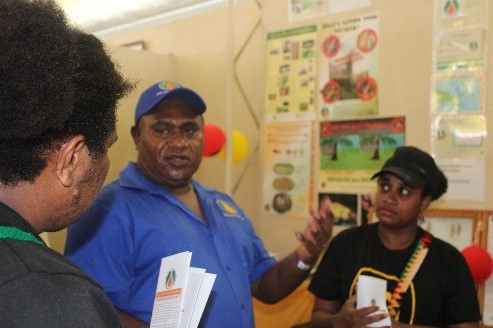
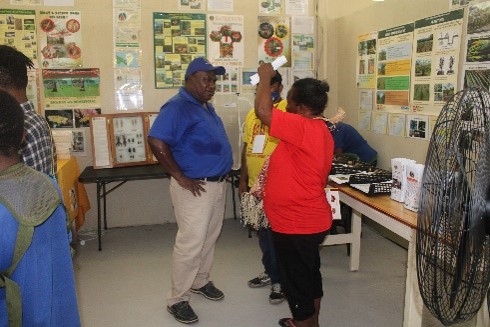
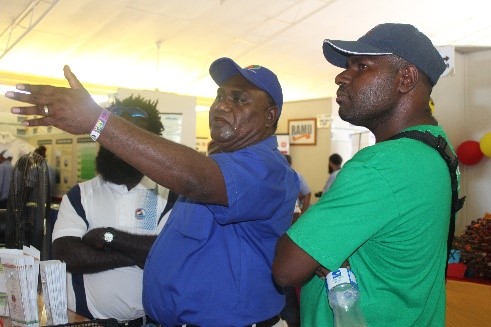
Plate 6: Steven Nake showcasing the Agronomy and Smallholder/Socioeconomic research to the show attendees.
A panel of judges physically visited all the pavilions in order for them to make a fair decision on the best pavilion/stall to win the champion Exhibitor shield. The judges consisted of two groups of expatriates who came at different time intervals. The NBPOL Pavilion had Oil Palm Plantation in booth 1, Oil palm Production in booth 2, Human Resource Department in Booths 3 and 4, Sugar cane research in booth 5, Oil palm research in booth 6, Beef Production in booth 7, Sugar Production in booth 8 and Sustainability & Quality Management (SQM) in booth 9. The judges were well received and informed by the team on the aspects of oil palm research. The show ended by 4 pm and the team returned to their respective accommodations to recharge for the next day.
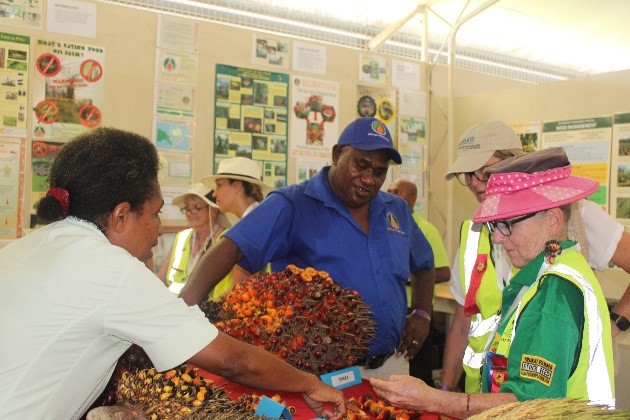
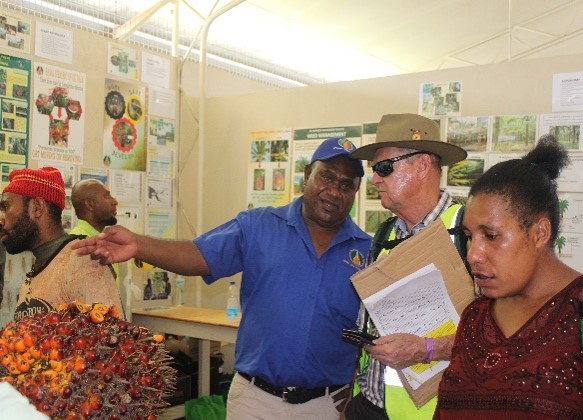
Plate 7: The first group of expatriate judges visiting the oil palm R&D booth (left) and one of the male judges from the second group of expatriate judges receiving an overview from Steven Nake
On the second day, Sunday 9th of October 2022, the booth received more show attendees than expected, keeping the presenters on their feet with constant interactions until the end of the day. There were other activities that involved the booth presenters, such as the drawing of prices by the Sustainability Department. PIIRO (Preventing Incidents by Identifying, Reporting and Observing positive safety behaviour) forms were issued to presenters to identify hazards or risks or positive observations within the NBPOL pavilion and fill in the form to go into a draw to win prizes. Two oil palm R&D team members won prizes based on their PIIRO raised. It was a great way for Sustainability to get safety feedback for improvements or consideration for the upcoming annual shows. Moreover, the oil palm R&D booth received great feedback from both showgoers and representatives from other booths and pavilions, as well as showing interest and appreciation for the work that R&D does for the oil palm industry.
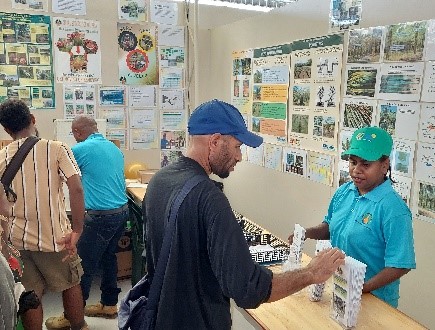
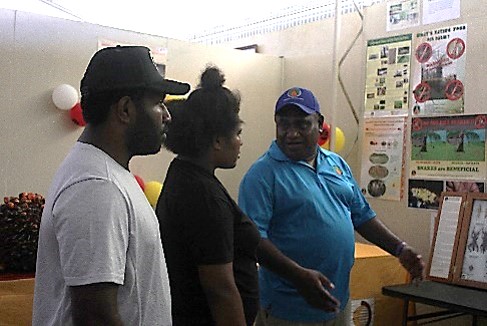
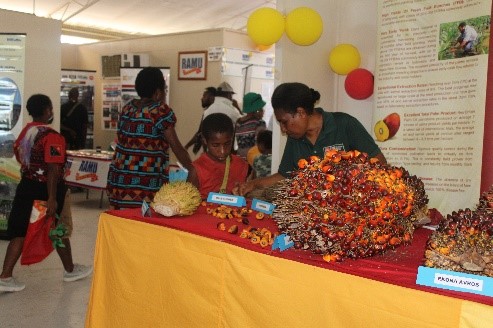
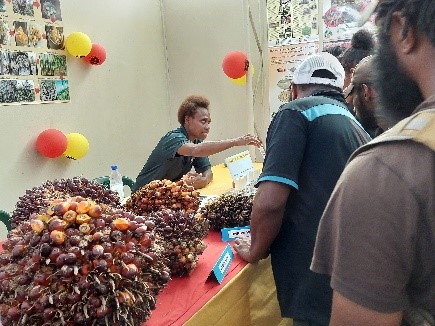
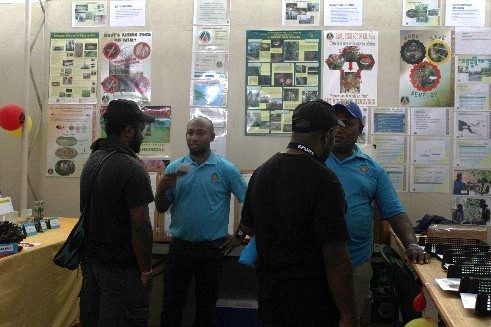
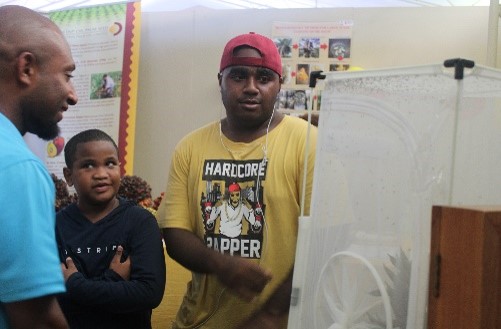
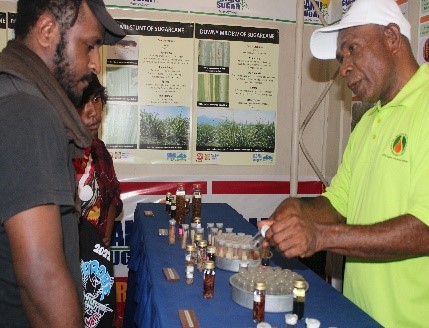
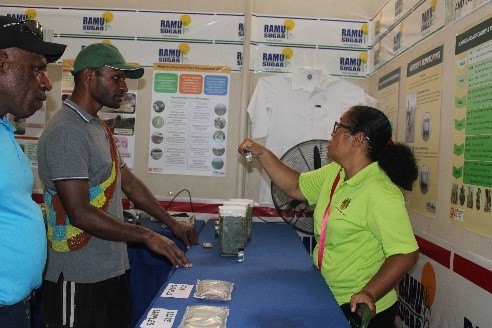
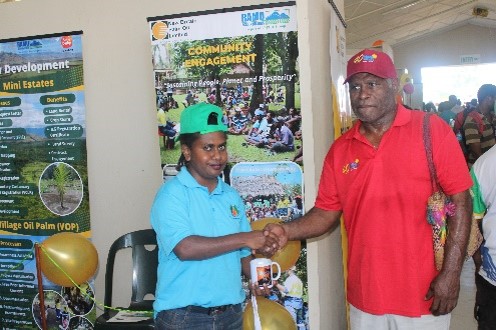
At the end of Day 2, the champion exhibitor was announced, with NBPOL winning the champion exhibitor for 2022. Everyone was excited and satisfied that all efforts were not wasted. The show ended with a rare occurrence of fireworks in the daylight. By 5 pm, everything was packed with our RAIL team heading back to Ramu and Dami team returning to their respective accommodations and travelling back to Hoskins on the following day. The 2022 Morobe Agriculture show was very successful, with a massive but trouble-free crowd. There were no crime issues or fights with security and police officers patrolling on foot, and thus ended well on a high note.
The Oil Palm R&D team would like to acknowledge the support from the people behind the scenes, the show would not have gone smoothly without them: The Admin and finance team for PNG OPRA and OPRS for organizing travel and accommodation bookings in which there were nil hiccups. The RAIL R&D team for assisting with all requests and provision of items missed out on. The NBPOL Pavilion organizing committee for allocating a booth to the oil palm R&D to showcase their research work. And great gratitude to the OPRA and OPRS employees who assisted with preparing the show materials of specimens, samples and pamphlets. All cooperative inputs resulted in a rewarding output and therefore, the oil palm R&D team expresses great appreciation.
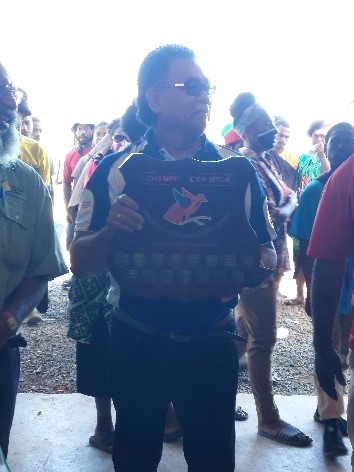
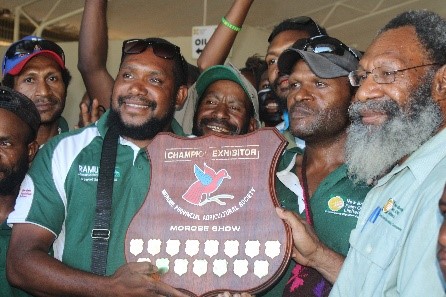
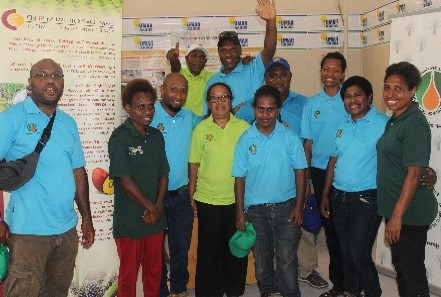
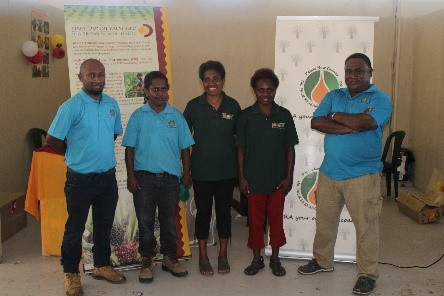
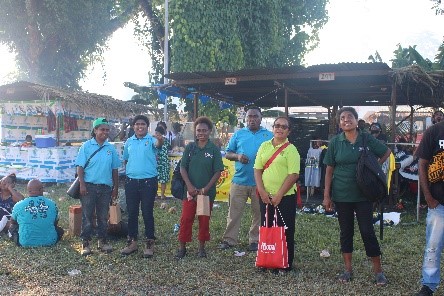
More Photos!!
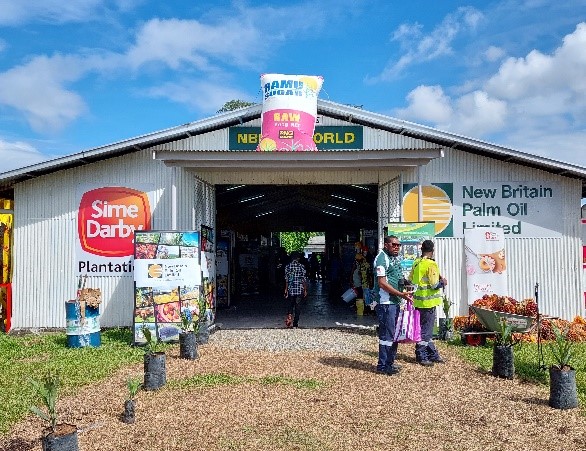
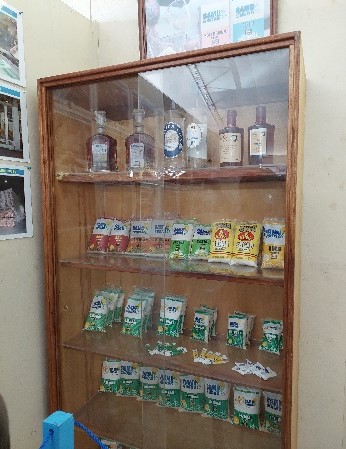
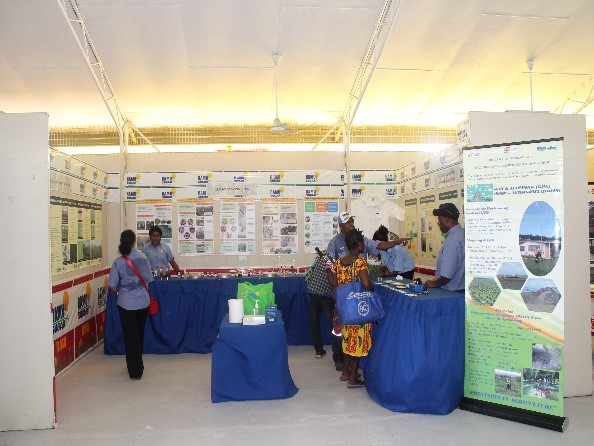
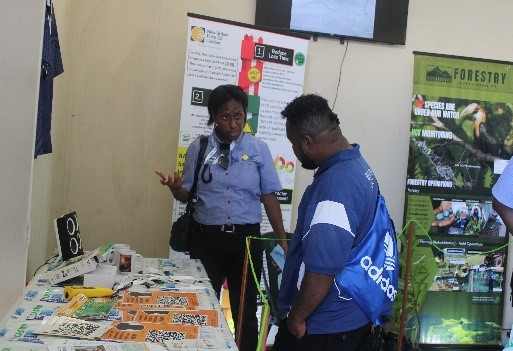
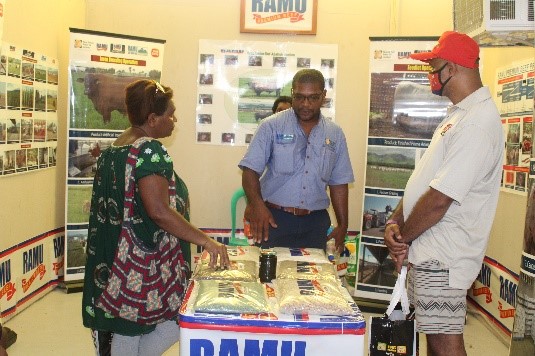
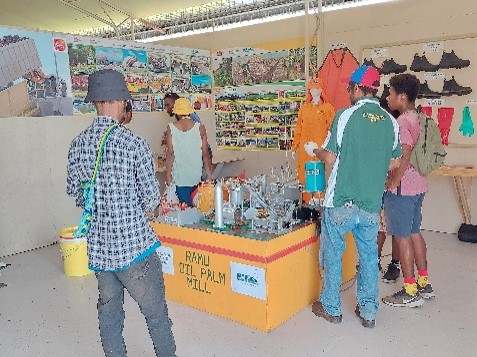
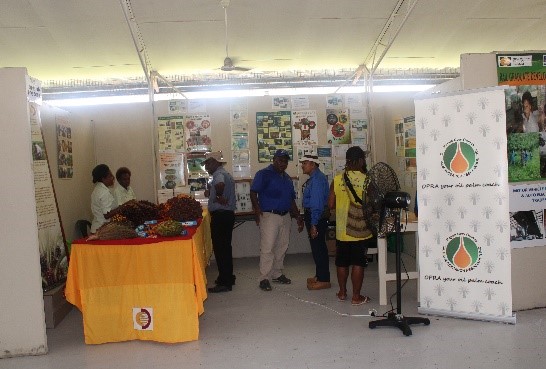
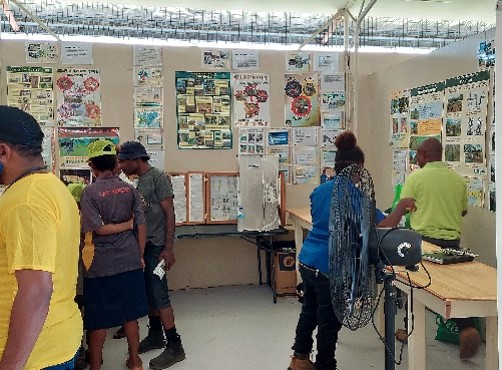
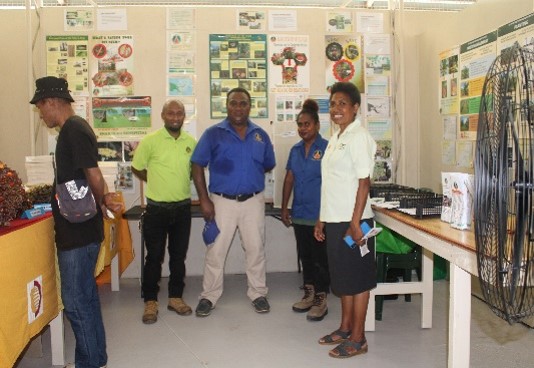
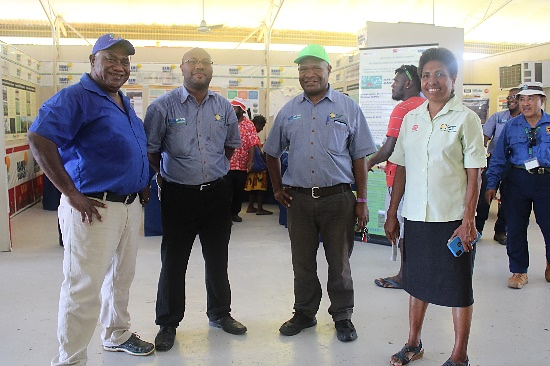
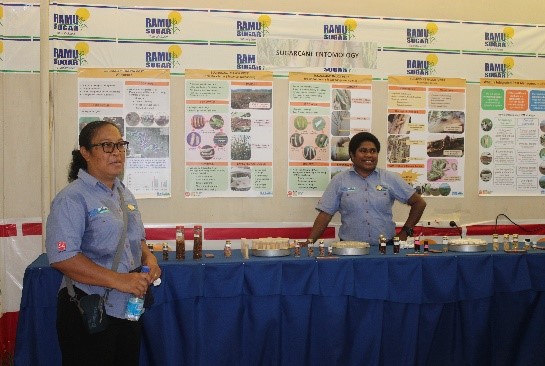
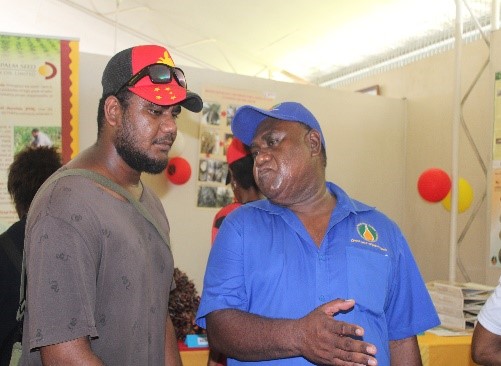
Plate 11: Steven Nake (OPRA Head of SSR), John Palolen (RAIL Agronomist), Kume Kiage (RAIL Morobe oil palm Group Manager) and Ruth Jordan-Som (Plant Breeder/Head of Plant Breeding) posing for the camera (left), Leka Tom (RAIL Plant Pathologist) and Lawrencia Kikitam (RAIL Entomologist) showcasing sugar cane diseases and pests, and a show goer Genesis Nake receiving oil palm R&D information from his own father
